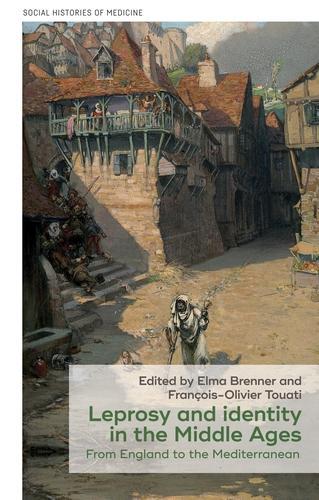
Leprosy and Identity in the Middle Ages: From England to the Mediterranean
(Hardback)
Publishing Details
Leprosy and Identity in the Middle Ages: From England to the Mediterranean
By (Author) Elma Brenner
Edited by Franois-Olivier Touati
Manchester University Press
Manchester University Press
13th April 2021
United Kingdom
Classifications
Tertiary Education
Non Fiction
European history: medieval period, middle ages
European history
362.1969980940902
Physical Properties
Hardback
424
Width 138mm, Height 216mm, Spine 24mm
640g
Description
Leprosy and Identity in the Middle Ages presents new, cross-disciplinary research on leprosy in medieval Europe, focusing on questions of identity. It reveals complex responses to the disease, challenging earlier views that medieval sufferers were uniformly stigmatised. The social, religious and cultural impacts are explored, as are post-medieval perspectives.
For the first time, this volume explores the identities of leprosy sufferers and other people affected by the disease in medieval Europe. The chapters, including contributions by leading voices such as Luke Demaitre, Carole Rawcliffe, Charlotte Roberts and Francois-Olivier Touati, challenge the view that people with leprosy were uniformly excluded and stigmatised. Instead, they reveal the complexity of responses to this disease and the fine line between segregation and integration. Ranging across disciplines, from history to bioarchaeology, Leprosy and identity in the Middle Ages encompasses post-medieval perspectives as well as the attitudes and responses of contemporaries. Subjects include hospital care, diet, sanctity, miraculous healing, diagnosis, iconography and public health regulation. This richly illustrated collection presents previously unpublished archival and material sources from England to the Mediterranean.
Reviews
'This highly illuminating collection of original essays does more than cast light on the image and experience of persons affected by leprosy in medieval western Europe. By examining the depth and complexity of the impact of this one disease, it should also enhance our understanding of issues of life and health in our own time. The contributing authors represent a variety of American and European institutions as well as a diverse mix of disciplines, methodologies, and generations. A thoughtful and informative introductory essay sets the stage, followed by studies that range from description of the excavation of a single British leprosarium to a profusely illustrated essay on the medieval iconography of leprosy. Essays focus additionally on, e.g., linguistics, bioarchaeology, medical institutions, and religion. The volume concludes with an examination of the historiography of leprosy in the 19th and early 20th centuries. Extensive notes are included at the end of each essay, while a thorough, detailed index provides cumulative access at the end of the volume. There is no general bibliography. This collection should serve the interests of instructors in history, sociology, medicine, and religion, providing a useful model of interdisciplinary study.
--C. D. Kay, emeritus, Wofford College
Summing Up: Recommended. Lower- and upper-division undergraduates. Graduate students, faculty, and professionals.
Reprinted with permission from Choice Reviews. All rights reserved. Copyright by the American Library Association.
Author Bio
Elma Brenner is Research Development Specialist (Medieval and Early Modern) at Wellcome Collection
Franois-Olivier Touati is Professor at the Universit Franois Rabelais (Tours)
